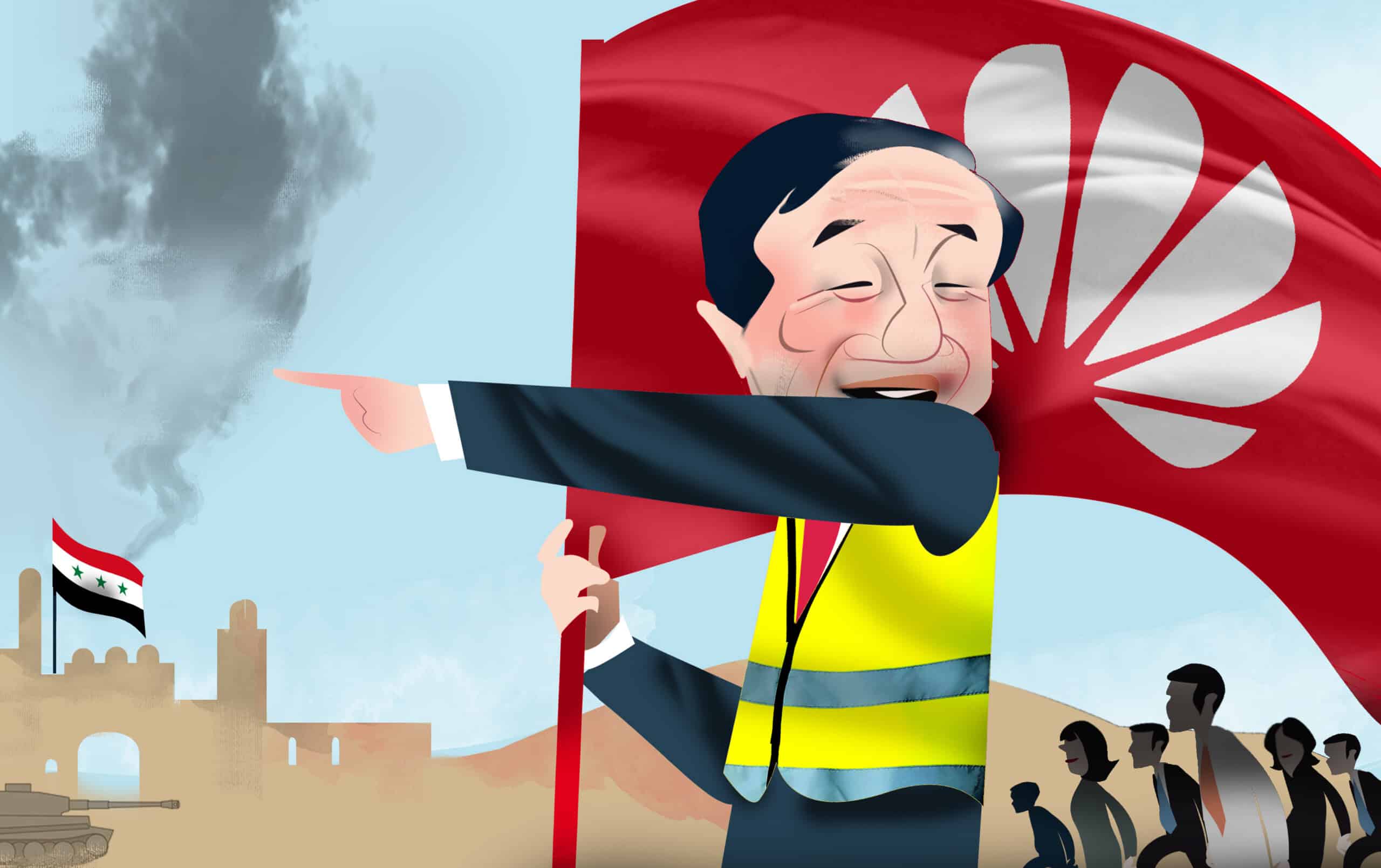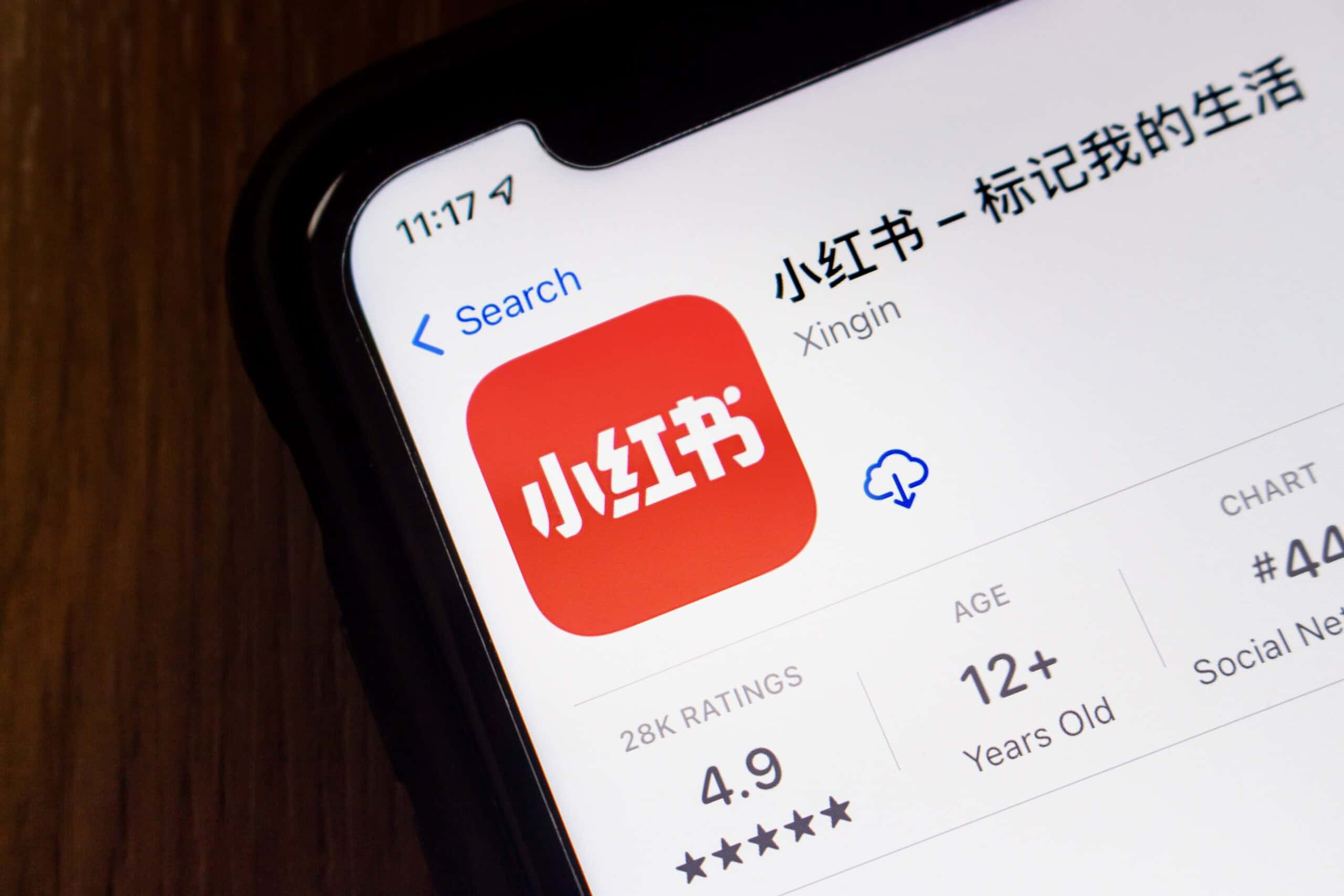David Lubin is the managing director and head of emerging market economics at Citi, as well as an associate fellow at Chatham House in London. Before joining Citi in 2006, Lubin had been at HSBC since 1989, where his career started in the field of sovereign debt restructuring negotiations with governments in Latin America and Eastern Europe. His book, Dance of the Trillions, which in part examines China’s crucial role in the finance of developing nations, was selected by the Financial Times as one of the best economics books of 2018. He holds degrees from Oxford University and the Fletcher School of Law and Diplomacy at Tufts University. In this lightly edited conversation, we began by discussing whether China will ever open itself up fully to international capital markets and its approach to global finance.

Illustration by Kate Copeland
Q: How would you characterize China’s role within global finance today? What are some of the central shifts from 10 years ago, and how did we get to where we are today?
A: The route to today is a wavy, rather than a straight, line. Back in 2012, the political report to the 18th Party Congress contained an explicit objective of fully opening China’s capital account. Then in 2017, at the 19th Party Congress, any reference to achieving full capital account liberalization disappeared. In between those two dates came, in my view, a critical moment in the evolution of China’s approach to international financial integration, in a speech that [China’s former central bank governor] Zhou Xiaochuan gave at the 2015 IMF spring meetings where he coined the phrase “managed convertibility”.
Zhou said what China wants for the renminbi is not full convertibility like you in the West keep telling us to do, we want “managed convertibility.” That was a very interesting turn of phrase, because what it suggests is that we’re not going to just let the market decide how to allocate capital across borders. We, the Communist Party of China, are going to exercise our discretion to decide what kind of capital flows are good, and what kind of capital flows are bad.
But that phrase needs to be understood carefully these days, because in the last two or three years, it’s clear that the Chinese authorities have made a lot of effort to catalyze capital inflows into China. And it does feel like renminbi internationalization is a more explicit project of theirs today than it was five years ago. That said, I still think that ‘managed convertibility’ remains the best description of China’s approach to international financial integration. Because even though they’re currently on a path towards liberalization, the right way to think about this is that they are walking down a road — ‘Liberalization Road’ — the end of which they do not want to reach.
Like an asymptote or Zeno’s paradox? You never reach the end…
Exactly. The end of the road is a fully open capital account and a fully liberalized renminbi, and I just do not believe that the Communist Party of China would ever fully let the market decide what the price of $1 should be in renminbi terms. The party, through the central bank, will always maintain a say.
The reality that’s confronting China is that the norms and rules of today’s international monetary system mean that a heavy-hitting global currency needs to be free of capital controls. That’s not true by definition — the post-war Bretton Woods system was full of capital controls — but it’s true today. So what China really wants is for the structure of the international monetary system to change in a more China-friendly direction. That will take ages, though.
What stops Beijing from walking to the end of ‘Liberalization Road’?
It’s partly practical and partly ideological. The practical thing is that Chinese policymakers are gripped by a fear of and a need to avoid a financial crisis. Since the probability of crisis goes up the more you just let the market allocate resources, prudential crisis avoidance strategy requires the authorities to exercise their discretion to control bad outcomes that are delivered by speculative behaviour. The ideological point is that for any economy, the exchange rate is the single most important price in the economy. And from an ideological point of view, the idea of just letting the market fully decide what the price per dollar should be in renminbi terms just doesn’t sit well with this administration’s sense of what its mission is.
Because even though they’re currently on a path towards liberalization, the right way to think about this is that they are walking down a road — ‘Liberalization Road’ — the end of which they do not want to reach.
Is ‘managed convertibility’ unique to China? And if so, is ‘managed convertibility’ a synonym for the so-called ‘Beijing Consensus’?
I don’t think it fits totally. It’s got some relationship with the ‘Beijing Consensus.’ But in a way, it’s not a China-specific point. There are lots of countries these days that are quite keen to take back some of the control that had previously been given to market forces. The idea of restricting capital movement — both inflows and outflows — and the idea that the policymakers should take on the responsibility to control capital movements is becoming a much more popular view. It’s not just a China-specific or China-alone approach.
However, there is a connection to the Beijing Consensus. If the Washington Consensus was an effort to allow the market to allocate resources within the economy and across borders, then the main contrast between a Washington Consensus and a Beijing Consensus is the scope that the policymaker has to use their discretion to allocate resources in the economy. And that has a particular resonance in China’s system because of the special claim that the CCP makes to competence, which is the essence of the CCP’s claim to legitimacy. If you have a market that time and time again demonstrates incompetence, then it’s difficult to avoid the conclusion that the party will wrest control of this kind of resource allocation.
If the ‘Beijing Consensus’ is not reducible to ‘managed convertibility’, what are its other features?
One element, as we discussed, is the authorities’ role in managing a country’s financial relationships with the rest of the world. The whole essence of the Washington Consensus was the idea of the small state. And I think one important distinction between the Washington Consensus and the Beijing Consensus is the role of the state, and the competence claimed by the policymaker to improve the way resources are allocated, to decide what industries get subsidies to decide what sectors of the economy get prioritized.
In a way, the Beijing Consensus these days has become more and more uncontroversial in the sense that you have a bunch of Western governments that are becoming more interventionist — the United States’ ‘Build Back Better’ jobs plan, the emphasis on public sector investment in infrastructure in Europe, the European recovery and resilience facility — these are examples of governments providing the domestic economy with the sort of networks that the economy needs to perform efficiently. This way of characterizing the Beijing Consensus — the idea that the government should not always assume that the smaller it is, the better off the country will be — is now shifting West.

It sounds like the pandemic has, to an extent, if not vindicated then at least offered a good opportunity for other countries to pursue policies or approaches similar to the Beijing Consensus. What have been the central ways the pandemic has impacted China’s economy and financial system? And how does this relate to the international system?
In addition to the idea that the pandemic revives the idea of the activist state, another consequence of the pandemic is a greater sense of protectionism, in a very broad sense. You can see that in China’s dual circulation strategy; the dual circulation strategy, in essence, is saying: “It’s a scary world out there. We need to encourage self-reliance.”
Self-reliance has been a theme of Chinese policymaking for a long time. But I think the dual circulation strategy is a kind of doubling down on the principle that the rest of the world can be an unreliable place, either for economic reasons — because the West is dying — or for strategic reasons, because ‘everybody hates us’. No matter which is the dominant factor there, self-reliance has even more relevance to Chinese policymaking now than it did in the past. But at the same time, those initiatives I mentioned earlier — the American jobs plan, the recovery and resilience facility in Europe — also contain elements of economic nationalism, because they all focus on the need to achieve what is politely called supply-chain resilience.
And so this increase in public investment that we’re going to be seeing in the U.S. and the EU, to some extent, is a mirror of what China has been doing in the last 10 years. It’s interesting, after the global financial crisis, because austerity was a guiding principle for fiscal policy, if you are an austerity-minded government, the first thing you’re going to cut is investment spending. That’s because it’s just easier to do than cutting wages or interest payments. What we see in the world outside China is investment spending declining as a share of GDP over the last 12 years.
But in China, the opposite has happened…
Exactly. And so I think what we’re seeing now is a coming together of two things. First of all, the concept of austerity has lost its appeal. And secondly, the fruits of China’s investment-focused economic strategy seem very evident — the high speed rail, beautiful airports, and amazing roads.
I think that there is a sense of a fear of missing out in the West — maybe even a sense of jealousy or envy — that China has achieved something because of its investment-oriented state activism. China has achieved something in the last 12 years that leaves some countries in the West feeling slightly like they’ve allowed themselves to fall behind.
And do you think that envy stems from Western governments seeing China succeed by adopting the inverse logic of their typical response to recession?

Maybe. I think the envy is more related to the results, right? But you can also see evidence of it in the G7 communique following the Cornwall summit [in June] — this reference to a new G7 strategy called B3W (“Build Back Better World”). It’s basically the G7 saying to itself: “Wow, that Belt & Road Initiative. They’ve done something and we need to respond.”
It’s pretty unclear exactly what the B3W will consist of. But it is clear that the G7 wants to mobilize infrastructure financing for developing countries to give them an alternative to China. So in these two instances, both in the way one should look at the new push towards infrastructure and supply chain resilience in the West, and also in the way one should analyze the West’s response to the BRI, China’s example — what China has done, what China has achieved — is now shaping Western policymaking. You may not want to call that a Beijing Consensus but I think that there are aspects of policy making within the G7 that are now China-influenced.
Would you say the BRI has been a successful project in that respect? What are some of its weaknesses? Was it a mistake, for example, for the projects to be mostly funded in U.S. dollars?
I don’t have a clear explanation why the BRI projects are so overwhelmingly funded in dollars, but they are. The BRI had a lot of fanfare and a lot of activity in the years 2013 to 2016. And then, after 2016, BRI projects started to decline in number and amount very dramatically. There were three basic factors that explain why the BRI weakened in recent years.
One is that some countries started to moan about the consequences of the relationships with Chinese lenders, infrastructure providers, and contracts. That was most famously expressed by Mahathir Mohamad in Malaysia, who talked about a new colonialism. Second was a lot of pushback from the United States once Donald Trump came into office. And thirdly, I think China ran out of dollars to finance BRI projects.
When, in 2016, foreign exchange reserves fell from $4 trillion to $3 trillion , that was a big shock to Chinese officials. Although $3 trillion sounds like a lot of money, in the Chinese context, it’s really not. One way of considering the adequacy of one’s foreign exchange reserves is by comparing them to your domestic money supply, or M2. China’s domestic money supply is equivalent to around $30 trillion. Three trillion of reserves compared to over $30 trillion of M2 means the ratio of M2 to reserves is extremely high in China. And because it’s so high, China became unwilling to allow reserves to fall even further.
| BIO AT A GLANCE | |
|---|---|
| AGE | 58 |
| BIRTHPLACE | New Jersey, USA, family moved to London when I was 4, so I’m dual UK/US. |
| CURRENT POSITION | Head of Emerging Markets Economics at Citi; Associate Fellow at Chatham House |
| PERSONAL | Married to Tamara Joffe, 2 kids |
M2 is always growing otherwise the economy doesn’t function. But if China allowed reserves to fall below $3 trillion while M2 was consistently rising, then I think they would have had a financial stability problem. To put it another way, they became very reluctant to spend the dollars, once dollars fell to this critical threshold. The flip side of that is that one of the objectives of the Chinese in catalyzing these capital inflows is to bring more dollars onshore, to support domestic financial stability. In addition, though, I really believe that one of the consequences of bringing dollars in in this way is that it gives China more flexibility to pursue its objectives in the BRI. Given that the BRI is a bunch of dollar-denominated projects, the shortage of dollars that China suffered when reserves fell to $3 trillion constrained China. Now that there are more dollars on Chinese balance sheets — on the PBOC’s balance sheet, on the China Development Bank’s balance sheet — that gives China more flexibility with the BRI.
There’s much discussion of the pandemic accelerating China’s position as a global economic power. But it sounds like the relationship that China still has with the dollar, and in turn, the dollar’s relationship to the BRI encapsulates this tension between China’s position in the global economy versus its position within global finance, where China is still a relatively small player. Is that a fair assessment?
Clearly, there’s been a huge gap in those two measures of Chinese power for a long time. In the last 10 years, China has been responsible for generating one-third of global GDP growth; it’s been responsible for generating almost one half of global investment growth. China has achieved an extraordinarily important status within the global economy that those two numbers reflect, but its status in the global financial system is still, by comparison, relatively small; the amount of foreign exchange reserves denominated in renminbi is just above 2 percent. So, there’s a huge gap to close.
That gap will be sustained by two factors. One is just the historical forces of inertia. It was sometime in the 1860s that the U.S. overtook the United Kingdom in terms of GDP per capita. But by the 1950s, sterling still had around half of foreign exchange reserves. In other words, currency power, or financial power, proceeds much more slowly than economic power. The other is political. When sterling gave up its role as a lead global currency and passed that role to the dollar, that was one Western, liberal, European-cultured, democratic society handing the keys over to another. It’s difficult to imagine this transition being as smooth.
These days, China often emphasizes the UN as a central, legitimate organizing principle of international order. One consequence of this is also an emphasis on the IMF as an institution. What the Chinese are trying to do is to multilateralize how international governance should be organized, to take the U.S. out of the equation. There’s a huge challenge there for China, which is to find some way of getting the rest of the world to give it a voting share in those institutions — particularly the IMF — that is commensurate with China’s economic power. But I don’t think that is going to happen. That, in turn, raises the question of, is China just focusing on this in order to be able to say, “Well, look, you guys aren’t playing by any rules that can be considered fair, given China’s contribution to the global economy.” I think that China’s bid to close that gap between its economic and financial relevance faces a number of challenges.
I think that there is a sense of a fear of missing out in the West — maybe even a sense of jealousy or envy — that China has achieved something because of its investment-oriented state activism. China has achieved something in the last 12 years that leaves some countries in the West feeling slightly like they’ve allowed themselves to fall behind.
How has more domestic Chinese policy in the more recent past impacted these aims?
Chinese monetary policy in the last 15 months has been really fascinating. They’ve pulled off a trick. The trick is to separate the price of credit from the quantity of credit. When you look at the price of credit in China — i.e. the structure of interest rates — you see something that looks quite hawkish; Chinese interest rates are high. I would suggest one of the reasons they’re high is precisely in order to catalyze the capital inflow that we have talked about. They need to offer interest rates to get the rest of the world’s dollars into China. So, when you look at the price of credit, it seems hawkish, but when you look at the quantity of credit, the growth rate of total social financing last year was 30 percent; it was very, very high.
That magic trick allowed them to achieve multiple objectives. The first is to catalyze capital inflow. The other objective is that it helps them control or reduce the incentives for the growth of shadow banking. This reflects a frame of mind very focused on avoiding a financial crisis, as a crisis would be a very serious threat to the CCP’s claim to competence.
I would argue that over the last 10 years, one pattern in Chinese policymaking is that of a pendulum that flips, between times when using credit to support economic activity seems to be the main priority, versus times when limiting the buildup of credit in order to cap the build up of leverage, seems to be the priority. And so it appears Chinese policymakers have these two objectives in mind — support the economy, avoid a financial crisis — and those objectives, to some extent, conflict with each other. Because to the extent that you need to create credit to support the economy, that therefore allows leverage ratios to build up. And the more leverage ratios build up, the more you start generating financial risk. So there’s a real dilemma. And the way they resolve that dilemma is by flipping between the two ends of that pendulum.
In your book Dance of the Trillions, you write that China has “determined the life” of developing countries in recent years. With the dual circulation policy, and the ongoing discussion of a shift from an investment-driven to a consumer-oriented economy, what implications will that have for China’s relationship with the developing world?
There has been this debate for ages about changing the composition of the Chinese economy to make it more consumer-oriented and less investment-dependent. I actually think, particularly now that the dual circulation strategy has been articulated, that the aim to rebalance the economy towards consumption is really on the back burner. The needs of the dual circulation strategy, particularly if the dual circulation strategy is connected to China’s emphasis on achieving semiconductor self-sufficiency, to develop more food self-sufficiency, requires more investment in the economy.
So, I think what seemed to be an obsession a few years ago — about rebalancing the economy away from investment to consumption — is not there anymore. And interestingly, I think they’re quite right to abandon that obsession. My fun fact on this is that if you look back to the early 70s, consumption spending as a share of GDP in China was above 70 percent, which is basically where the U.S. is today, but you wouldn’t describe Mao-era China as a consumerist society. My point is that the ratio of consumption spending divided by GDP doesn’t necessarily capture very much. And because it doesn’t capture very much, I think China’s just as well to move away from that debate.
| MISCELLANEA | |
|---|---|
| BOOK REC | Wolf Totem by Jiang Rong |
| FAVORITE MUSIC | Somewhere in between Jimmy Page and Sara Vaughan. Very difficult question for me though. |
| FAVORITE FILM | Sweet Smell of Success with Burt Lancaster and Tony Curtis |
| PERSONAL HERO | Cheesy but Tamara Joffe |
So you don’t see the relationship between China’s demand for commodities and the support that provides for developing economies changing dramatically in the near future?
Well, I think that connects to what I was saying earlier about the American jobs plan, and European resilience. In other words, we’ve had this 10-year period where global investment spending has been extremely China-dependent. What I think is going to happen over the next few years is not that China will invest less, but that other countries will invest more.
From that point of view, developing countries might well become a bit less China-dependent, because the global investment cycle will be more evenly supported geographically. But that broad-based support for the global investment cycle is coming at a time when there’s more and more economic nationalism. The amount of additional trade that is generated by a unit of global investment spending is going to be smaller in the future than it was in the past. That’s because a lot of the investment spending that’s going to be taking place in the United States and Europe is around making these economies less dependent on trade. Supply chain resilience can be kind of understood as a bid to domesticate supply chains; once you’re domesticating supply chains, you’re less trade dependent.
Finally, you pose another question in your book, whether China will ever be able to and willing to translate its economic influence over the level of activity in the developing world into an input of intellectual influence. How would you answer that now?
We are already there. The 中国模式 ‘China-model’ concept is now absolutely embedded into the way the Communist Party thinks about itself. It’s clear that, in the past, China’s position was, “We’re just another developing country, we’re not trying to sell anything, we’re not trying to be the model for anybody.” That age is gone. We’re in a new age where China is saying we are an appropriate model for other developing countries.

James Chater is a journalist based in Taipei. His writing on politics, foreign affairs and culture from Taiwan has appeared in The Guardian, New Statesman, The Spectator and Los Angeles Review of Books. He completed his masters in Modern Chinese Studies at Oxford University. Previously, he also studied at Harvard as the Michael von Clemm Fellow. @james_chater



